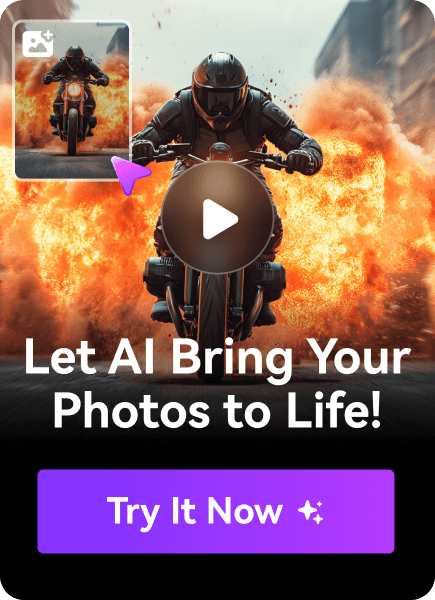
Building a website means you have to add specific pages. Each page has its own structure, design, and purpose. The FAQ page is essential to any modern website – you shouldn’t miss it. Today, we’ll talk about how to write and create an effective FAQ page and the rules you need to follow.
But before we do that, we’ll explain what an FAQ page is, its purpose, and the benefits it can bring to your website. We will also share some great examples you can use as a reference when designing your website.
In this article
What Is an faq Page?

faq stands for frequently asked questions, and as the name implies, this page should include the most essential questions and answers your potential customers or visitors are interested in. It is a dedicated page on your website that answers common questions, helps with various concerns, and provides visitors with relevant information.
You can create a stand-alone faq page or incorporate it into your help center. The general purpose of the page is to provide quick answers, and companies should look to update it over time. This page lets you be proactive and predict the issues your customers need help with.
You can also guide customers in the right direction and encourage them to perform the actions you want. The faq page can answer questions about products, payment methods, shipping, terms, updates, security, etc.
The Benefits of Having a Frequently Asked Questions Page
There are many benefits to having a frequently asked questions page; we can’t get into all of them. However, here are some of the most important benefits you can expect right away:
Builds Trust With Visitors

A good faq page shows that you care about your customers and want to share transparent information. Knowing what your customers think and answering their questions before they ask shows professionalism and builds trust.
Saves Time
A well-crafted faq page saves a lot of your valuable time. Instead of spending time answering questions on social media or email, your visitors can open this page and quickly find the answers they’re looking for. Of course, you will still have to answer more complex, less common questions.
Increases Website Traffic

Your faq page is an excellent opportunity to boost SEO and increase organic traffic. Google wants websites to have meaningful pages with relevant information, rewarding them with visibility. If you have great answers, your page might get featured as a snippet to increase your traffic further.
Boosts Sales
faqs answer important questions about products, shipping, pricing, refunds, and payment methods. This information can be the key difference between a customer purchasing or leaving your website. Building trust with your faq page will result in higher conversion rates.
Best faq Page Examples
- Airbnb: Airbnb has a knowledge base faq page that links to several resource pages. The articles answering questions have a scannable copy, offer videos, include animations, and offer relevant hosting tips.

- Spotify: Spotify effectively links to the most popular faq articles underneath the search and is one of the best examples of how to categorize topics and use video tutorials.

- Mailchimp: This faq page design shows that simplicity goes away. Questions and answers are short, clear, and well-organized, with a sliding window.

- Nike: Nike’s faq section has a minimalistic design. This faq template starts with a search bar and breaks down questions for a quick assist section.

- Wondershare: Wondershare is a large software company with many products. Their help center is a perfect example of how you can divide faqs by different products. It also includes a popular topics section and multiple support channels visitors can use to contact support.

Best Practices for Writing an faq Page
Here are some of the best practices you should adopt when writing an faq page for your website.
Pick Data-Based Questions

Don’t assume what your customers want to know when selecting the questions and answers you want to add to your page. Instead, consider your previous interactions with customers and their queries. Add the information you’ve been asked about often and use data about your customer interactions to create a list of valuable questions and answers.
Furthermore, address any common objections customers have about your services or products. Use this opportunity to explain why and how you provide value. You can use knowledge management systems, sales data, and other tools with tracking information to understand the needs and common issues of your customers.
Create Multiple Formats of Questions

First, if your services or products are more complex and deserve special focus, you should consider creating individual faq pages. On the other hand, you can make a global faq that talks about all issues but has a logical structure and organizes faqs into sections. Consider adding dynamic elements to your faq page.
For example, you can add a link to your product page or catalog or highlight the most valuable faqs. Ultimately, you should consider using different types of content, such as videos, presentations, and images. A tool like Virbo can quickly create faq videos and offer visitors a more interactive format.
Create a Cohesive Structure

If you create just one extensive list of questions and answers, your visitors will quickly tire of searching for the correct information. Divide your faqs by topic and create subcategories that address specific subjects. Make sure to add a search feature so users can quickly look for particular answers if this is their preferred method.
Furthermore, when writing your questions and answers, pay attention to the phrasing and keep it short and precise. Emulate customer language patterns so your questions can be easily scannable and contribute to the overall user experience.
Include Key Selling Points
Apart from giving valuable answers to the most common questions, the faq page should also complement all the information on the rest of your website. It should also act as a secondary search page where visitors can get concrete facts and clear any misunderstandings.
Every visitor is different and will have a different patch through your website. That’s why adding your key selling points within the faq is essential. No matter if you focus on quality, low price, or personalized service, make sure to mention your key strengths.
Add Live Support

Your faq page should give visitors multiple options for contacting customer support if they are still looking for the answer they want. For example, you can add a sticky navigation menu with links to your contact page.
It’s also a good idea to add a live chat option on your website so that users can contact support or get answers from a chatbot. Consider adding strategically placed call-to-action sections to encourage users to contact you for help if they can’t get the information from faqs.
Think about SEO

The faq page allows you to make your website even more SEO-friendly. First, link your questions to different pages so that Google can display answers in search results. On the other hand, include relevant keywords within your questions and answers.
Even if the user isn’t directly looking for your business, they might end up on your site if you give them valuable information or the opportunity to solve their problems.
Track Progress & Update

Once you’ve created an faq page, monitor its performance by looking at page traffic, bounce rates, and returning visitors. For example, an faq page should grow your organic traffic, and if this doesn’t happen in a few months, consider making changes.
On the other hand, if the bounce rate is high and people aren’t moving to different pages on your site from your faq page, you might want to reconsider creating different content that applies to their needs.
Conclusion
In the end, if you don’t know where to start when creating a website faq page, here’s a general faq template you can follow. First, create a navigation menu and add a search bar. If possible, set aside featured articles or questions that are most popular.
Then, list frequently asked questions with proper structure and add CTA buttons or text around the page to encourage action. Use the shared faq examples for inspiration to create a fantastic page that will deliver results.



